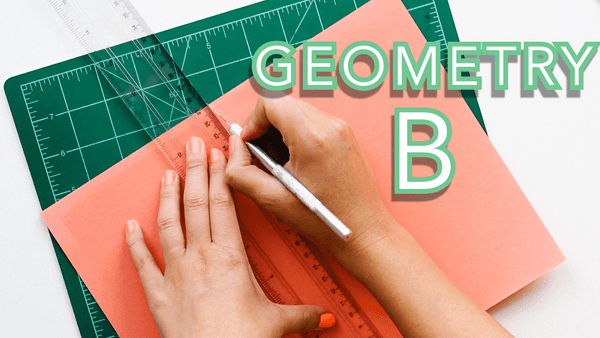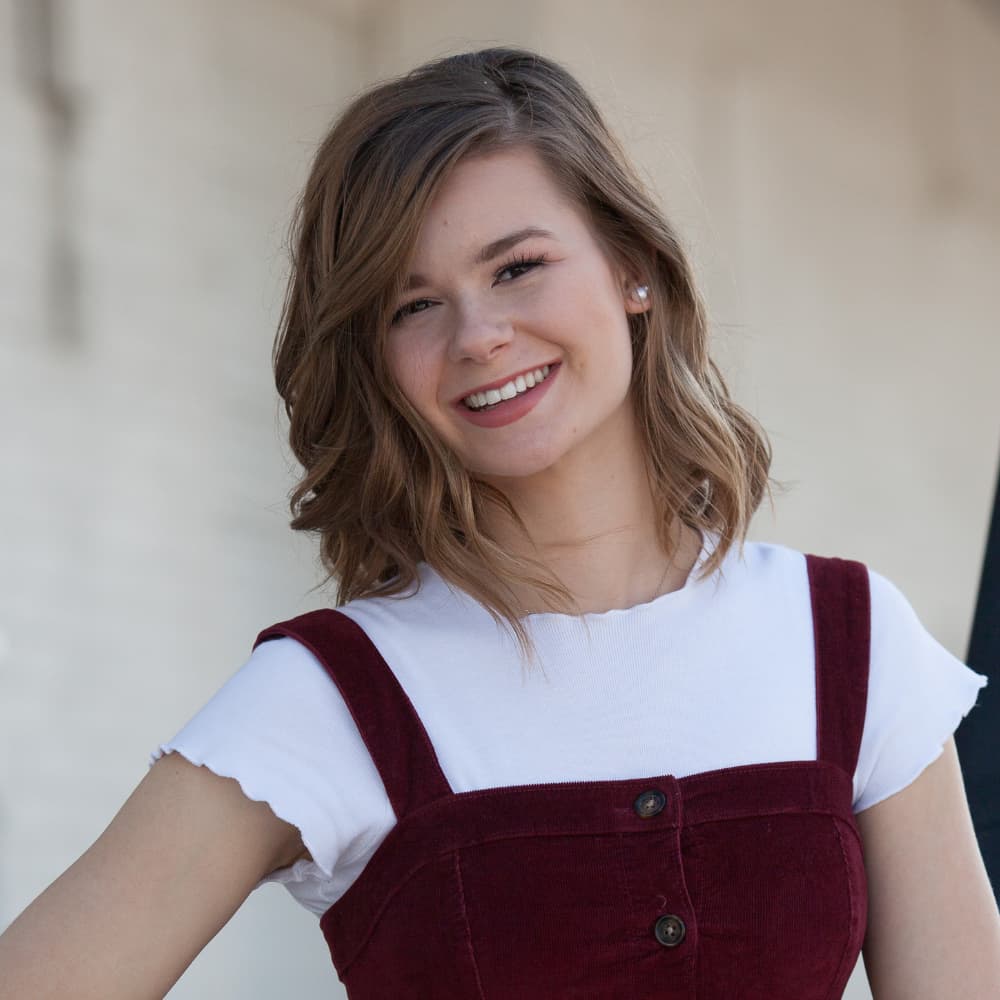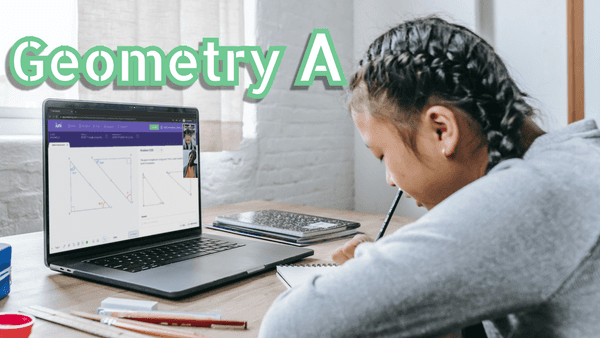- Private 1:1
- Format
- Age 13-16
- Learners
- Weekly
- Classes
- 50 minutes
- Per class

About this Course
Billing
Billed as
$275 / month
Scheduling
1:1 classes are 50 minutes long and can be scheduled anytime Monday-Sunday from 7am to 7pm PT. To begin, select Book your Placement Class to signup. Our team will then match you and set up your first class!
- Course duration4-6 months
- Lesson50 minutes
Learning Targets
Quadrilaterials
Introduction to Quadrilaterals-1: The student knows the definitions of quadrilaterals and parallelograms.
Introduction to Quadrilaterals-2: The student can identify a convex quadrilateral from a concave quadrilateral.
Introduction to Quadrilaterals-3: The student can find the area of a trapezoid.
Introduction to Quadrilaterals-4: The student knows the definition of a square.
Introduction to Quadrilaterals-5: The student can find the areas of a parallelogram and a square.
Introduction to Quadrilaterals-6: The student knows the definitions of a rectangle and rhombus.
Introduction to Quadrilaterals-7: The student can find the perimeters of a rectangle and a rhombus.
Parallelograms and Polygons
Parallelograms, Polyhedra-1: The student can name pentagon, hexagon, and octagon based figures.
Parallelograms, Polyhedra-2: The student can find the measure of an exterior angle of a regular polygon.
Parallelograms, Polyhedra-3: The student can find the measure of an interior angle of a regular polygon.
Parallelograms, Polyhedra-4: The student can find the area of a regular polygon.
Circumference and Area
Circumference and Area-1: The student knows the definition of a circle and basic associated properties of circles.
Circumference and Area-2: The student is able to calculate the circumference of a circle.
Circumference and Area-3: The student is able to calculate the area of a circle and a semicircle.
Circumference and Area-4: The student understands the relationship between the area of a circle and the area of a sector with a given central angle.
Tangents and Angles with Circles
Angles with Circles-1: The student understands what an intercepted arc is and how it relates to interior angles in circles.
Angles with Circles-2: The student understands the relationship between central angles and inscribed angles with the same intercepted arc.
Angles with Circles-3: The student can use the inscribed angle theorem to solve problems.
Angles with Circles-4: The student understands what a secant is.
Angles with Circles-5: The student can apply the outside angles theorem.
Angles with Circles-6: The student understands how the power of a point can be used inside and outside a circle.
Tangent-1: The student knows the definition of a tangent.
Tangent-2: The student understands how to use the Two Tangent Theorem.
Tangent-3: The student understands how to use the Tangent Chord Theorem to solve problems.
Tangent-4: The student can use the power of a point to determine the lengths of line segments given the lengths of intersecting secants and tangents.
Transformations
Transformations-1: The student can define an image and preimage.
Transformations-2: The student can identify a translation.
Transformations-3: The student can identify the point of rotation.
Transformations-4: The student can identify the angle of rotation.
Transformations-5: The student can identify the line of reflection.
Transformations-6: The student can identify a vertical, horizontal, or diagonal line of reflection and reflect a shape across them.
Transformations-7: The student can identify a scale factor.
Notation-1: The student understands translation notation.
Notation-2: The student understands rotation notation.
Notation-3: The student understands reflection notation.
Notation-4: The student understands dilation notation.
Notation-5: The student can identify the dilation on a shape.
Notation-6: The student understands the order when combining transformations.
Notation-7: The student uses proper notation when combining transformations.
Polyhedra
Polyhedra-1: The student can describe the distinction of a regular polyhedron.
Polyhedra-2: The student can identify different polyhedra.
Polyhedra-3: The student can identify cross-sections of polyhedra.
Polyhedra-4: The student can calculate space diagonals and face diagonals.
Formulas-1: The student can calculate surface area and volume of a cube.
Formulas-2: The student can calculate surface area and volume of a tetrahedron.
Formulas-3: The student can calculate the surface areas and volume of a prism.
Cylinders, Cones, and Spheres
Cylinders, Cones, and Spheres-1: The student can calculate the slant height of a cone.
Cylinders, Cones, and Spheres-2: The student can calculate the height of a cone.
Cylinders, Cones, and Spheres-3: The student can manipulate formulas to solve for unknown values.
Cylinders, Cones, and Spheres-4: The student can compare the volume of a sphere to the volume of a cylinder.
Formulas-4: The student can calculate the surface areas and volume of a pyramid.
Formulas-5: The student can calculate the surface areas and volume of a cylinder.
Formulas-6: The student can calculate the surface areas and volume of a cone.
Formulas-7: The student can calculate the surface areas and volume of a sphere.
General Mathematical Skills
I can explain what the question is asking for.
I can explain my thinking behind my work.
I check my work carefully during or after I finish a question.
When I am stuck on a question, I show perseverance by trying a new method or asking for help.
When I am stuck on a question, I use what I know to find a place to start.
General Learning Habits
Joyful Collaboration
- I practice listening to my instructor and sharing my ideas to cocreate understanding.
- I attempt tasks independently and ask my instructor questions when I need help.
Unlimited Curiosity
- I take ownership of my learning by asking meaningful questions both when I need clarification and when I want to know more about a topic.
Nimble Determination
- I practice resilience when I am frustrated that I have not yet achieved mastery of a new concept or skill; instead of complaining about challenges, I try new approaches and creative solutions.
Investment in Excellence
- I arrive to class on time and prepared to learn, with my computer set up with a strong internet connection.
- I complete my homework on time, and if I cannot complete my homework due to other obligations, I honestly communicate the reasons for late homework to my instructor.
- I do my best to stay present and on task for the whole session. I support my focus by putting away any distracting technology and setting notifications on my device to “do not disturb” mode.
Homework
Instructors will assign students roughly 60 minutes of class related problems at the end of each session. Homework is generally pulled from Juni's curriculum and is meant to complement the class experience and ensure the student continues to learn and grow outside of the session
Pre-Requisites
Completion of Geometry A
Who are Juni’s Instructors?
Our instructors are subject matter experts from top US universities. Instructors are highly-vetted and background checked prior to joining and undergo extensive training before ever teaching on our platform.
Upon signing up, parents are asked a series of questions that allow us to match your child with an optimal instructor based on their unique needs and interests. Factors that are considered in our matching process include Learning Style, Personality, Personal Experience, and Academic & Career Aspiration.

More Courses You Might Like
Real Reviews from Real Parents
Ray
My 3 sons ages, 10 1/2, 9 and 7 started using Juni in early June 2020 and absolutely love it. The instructors are college age kids and they relate to my boys very well. My oldest is doing both the coding and math tracks and I feel like he will be way ahead of his 5th grade class come the fall. Once the other two are old enough I will certainly be enrolling them in math as well.
Tarun Mehta
Juni has been amazing for my daughter. She is a reluctant learner when it comes to Computer Languages, but the Juni instructors have been engaging to her at a level where she feels comfortable with them and they manner in which they present the curriculum. They understood my ask that I Wanted her to start liking computer languages, and they are presenting the information in a way that is fun and relatable. I am very happy with my Juni experience and my daughter's journey with Juni so far!
Pooja
I have two boys taking classes and the Juni takes the time to match the right instructor for my children. They are patient and very consistent in their teaching. The boys are thoroughly enjoying their class and love accomplishing and learning new things!



